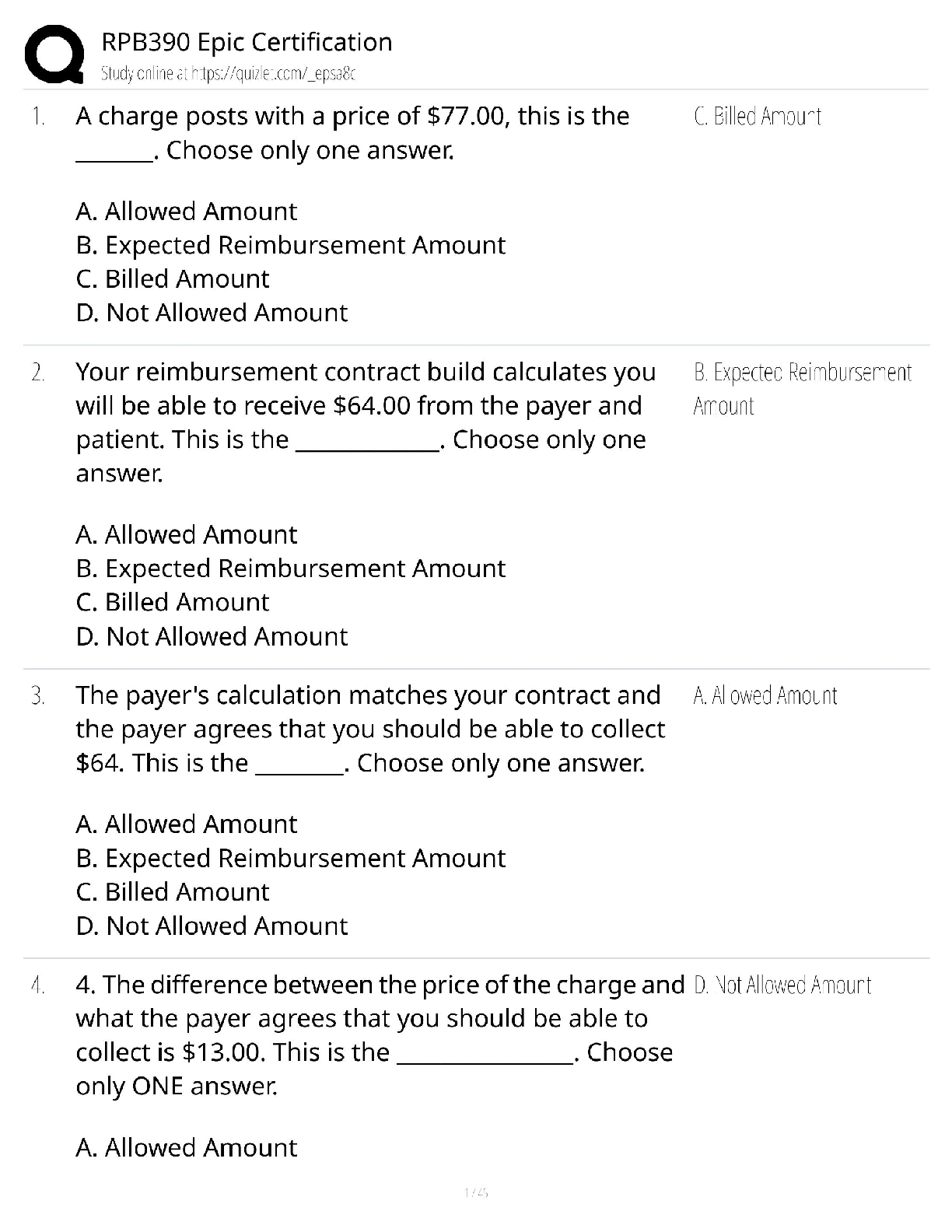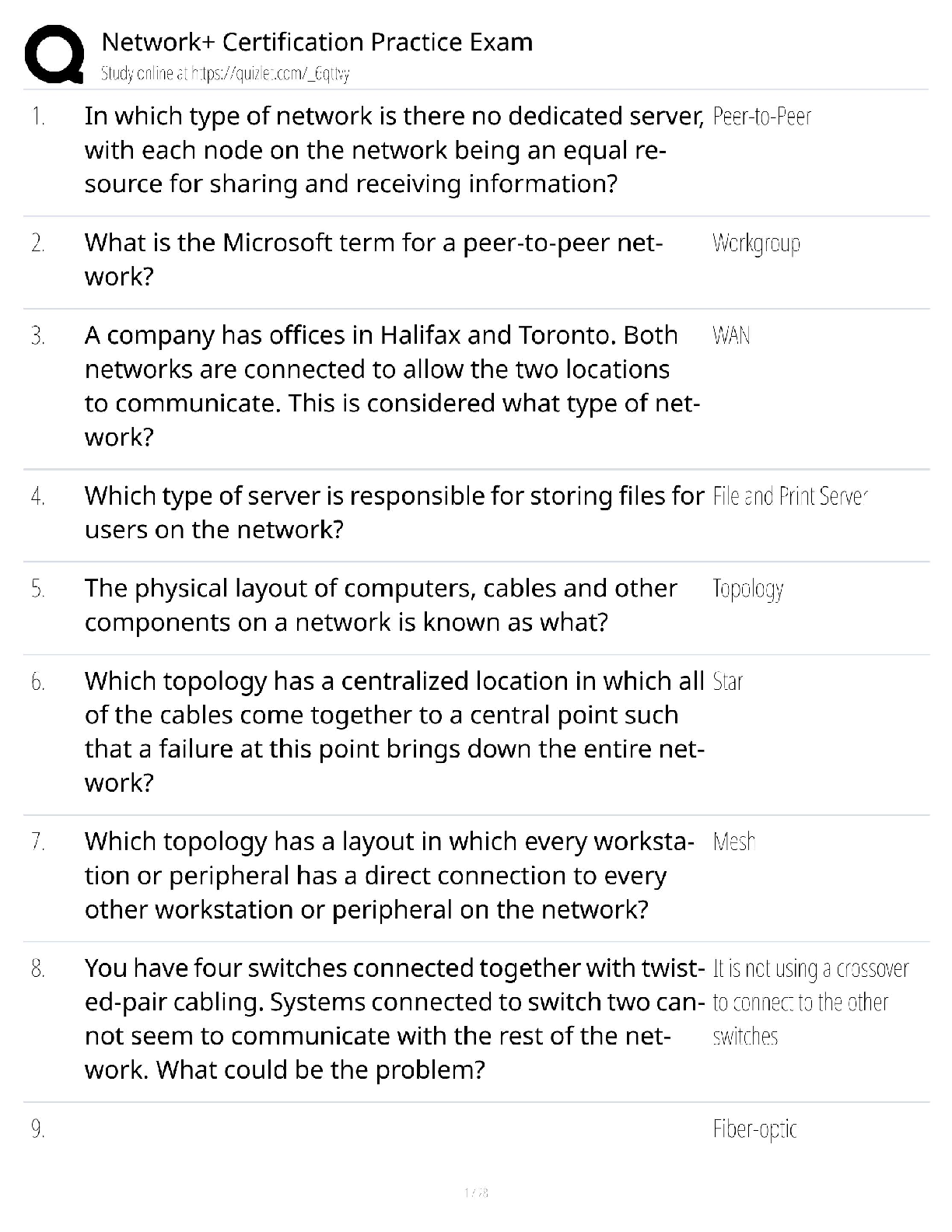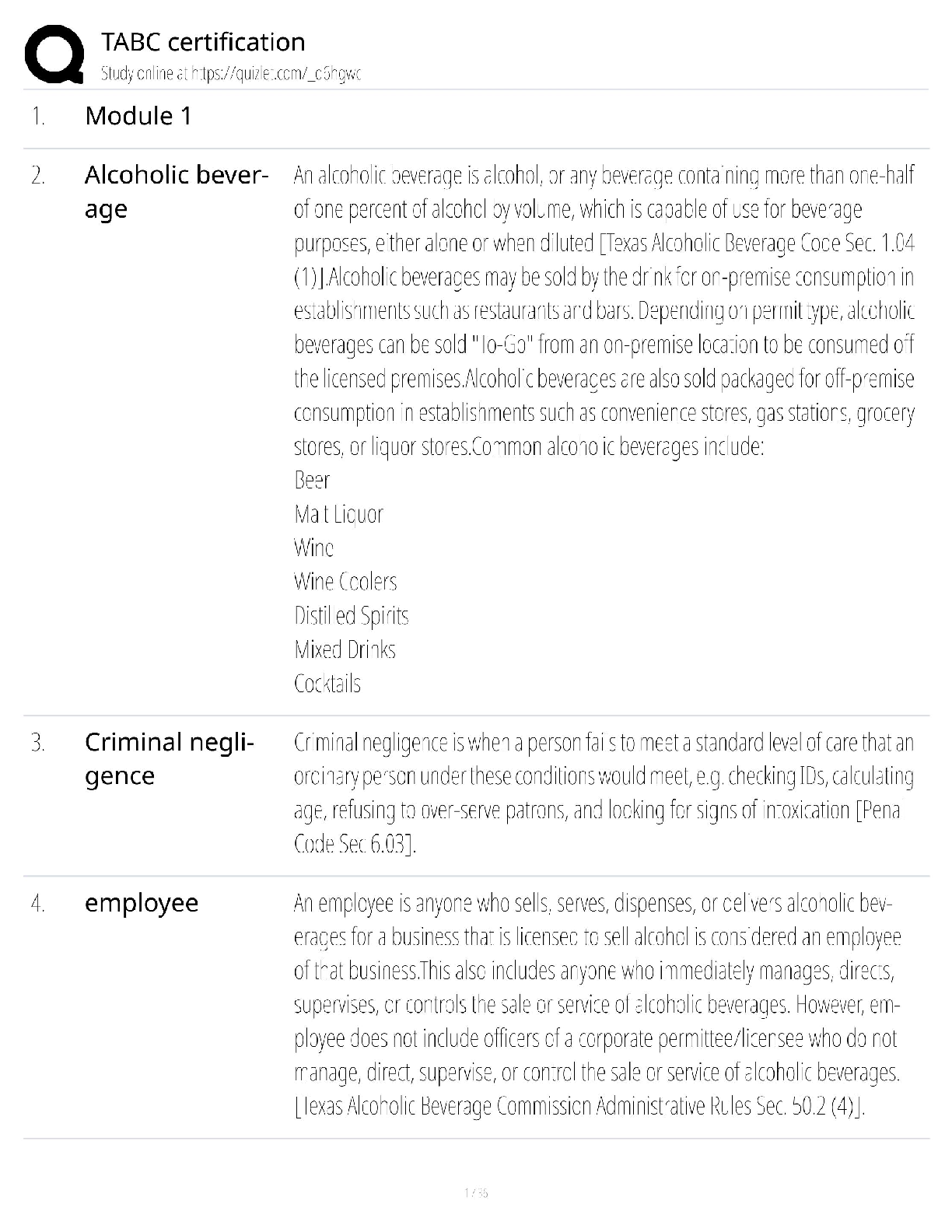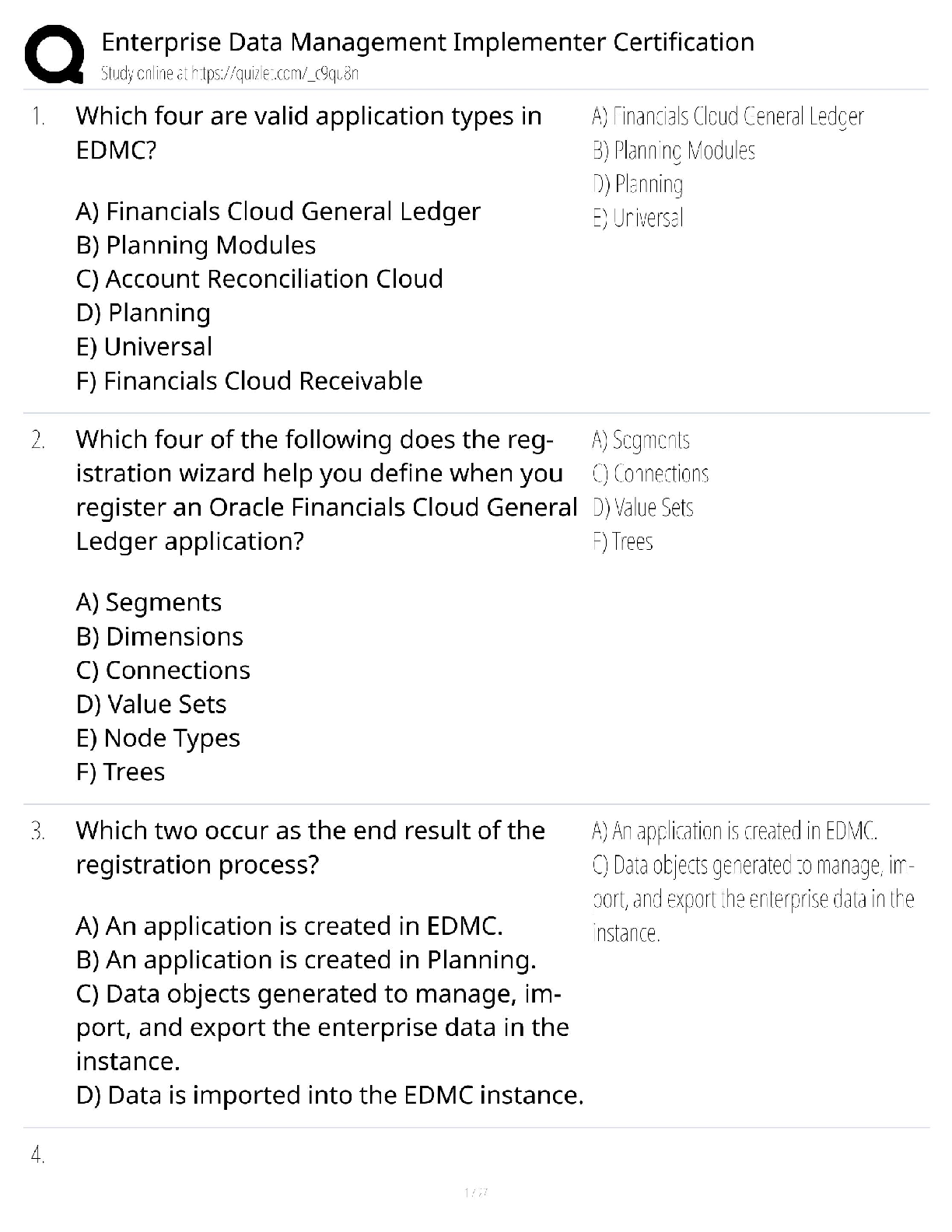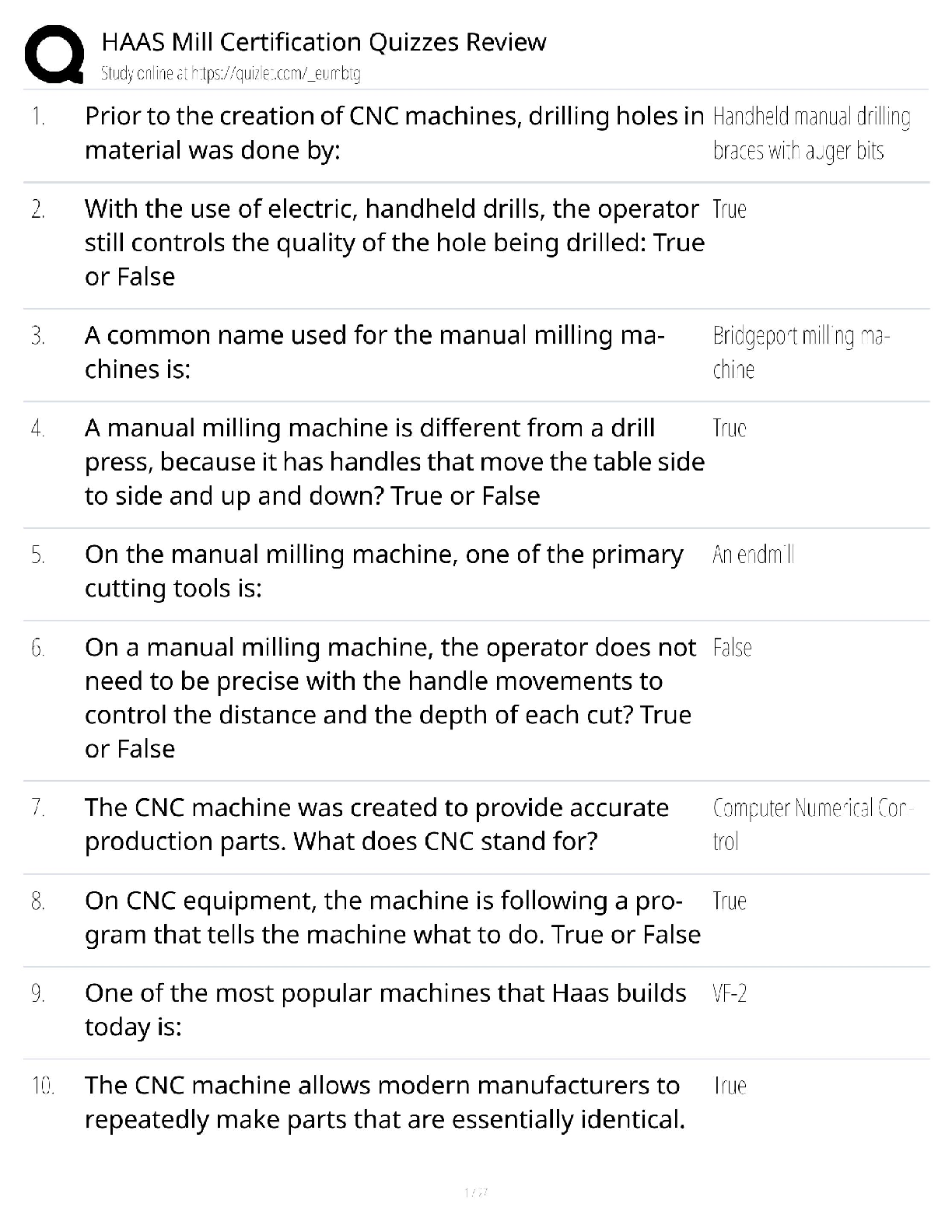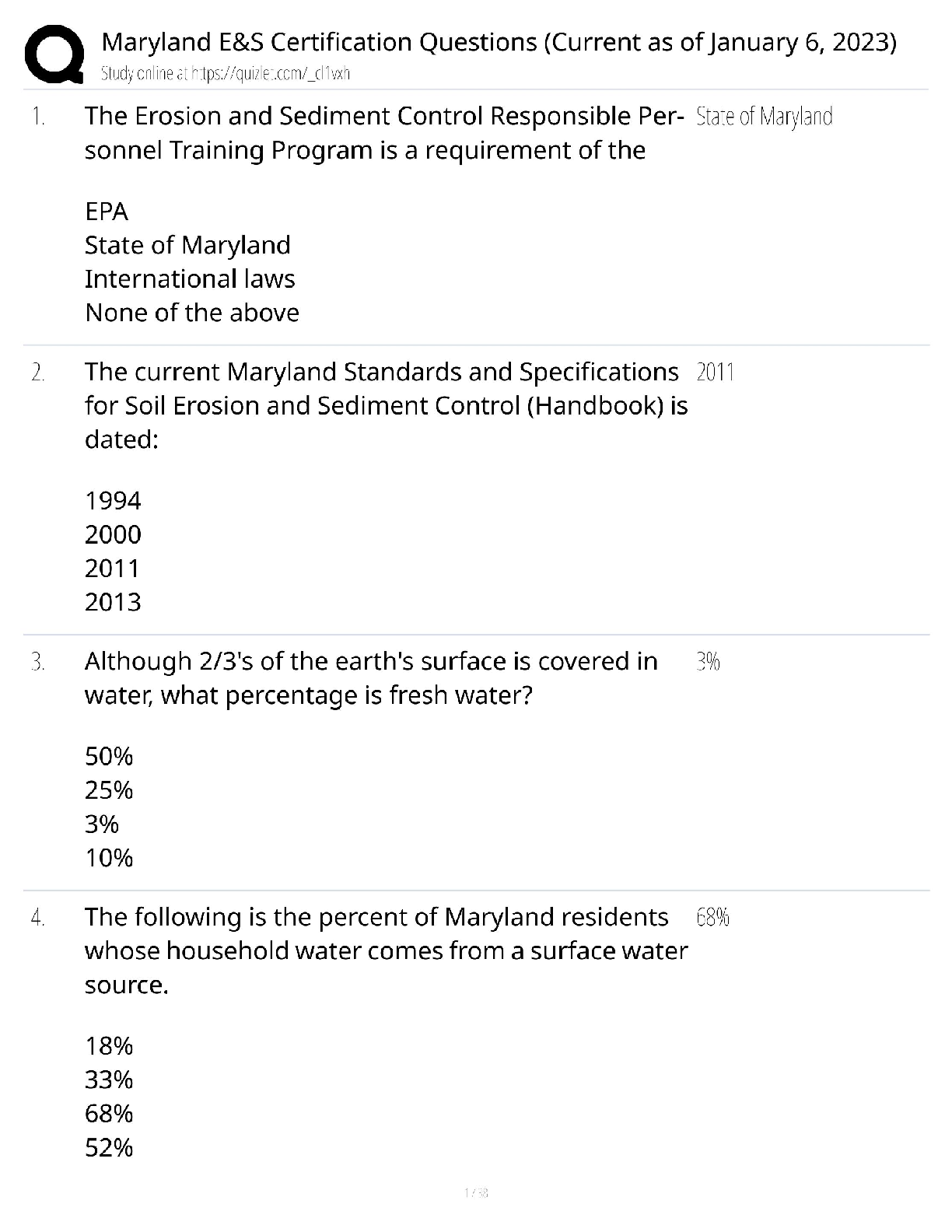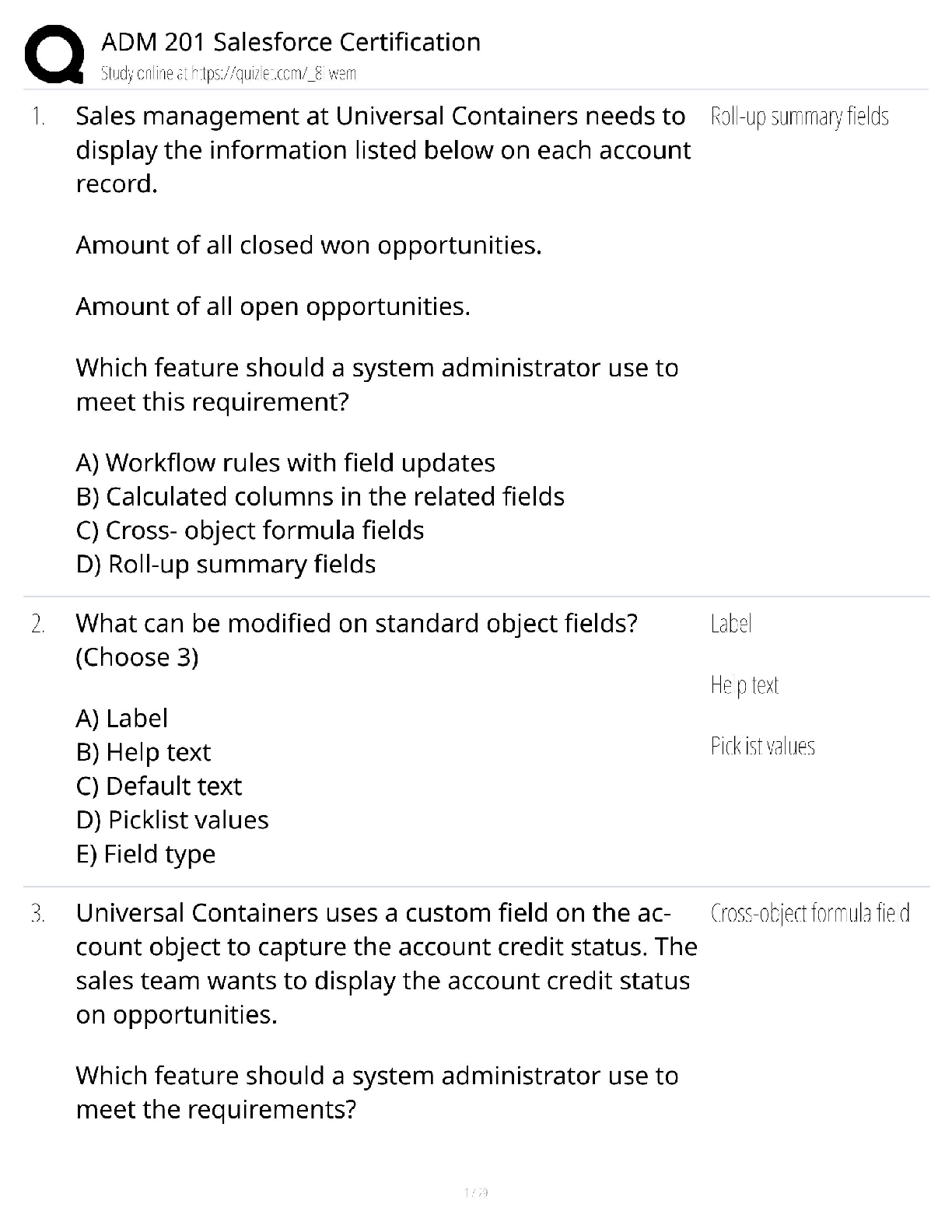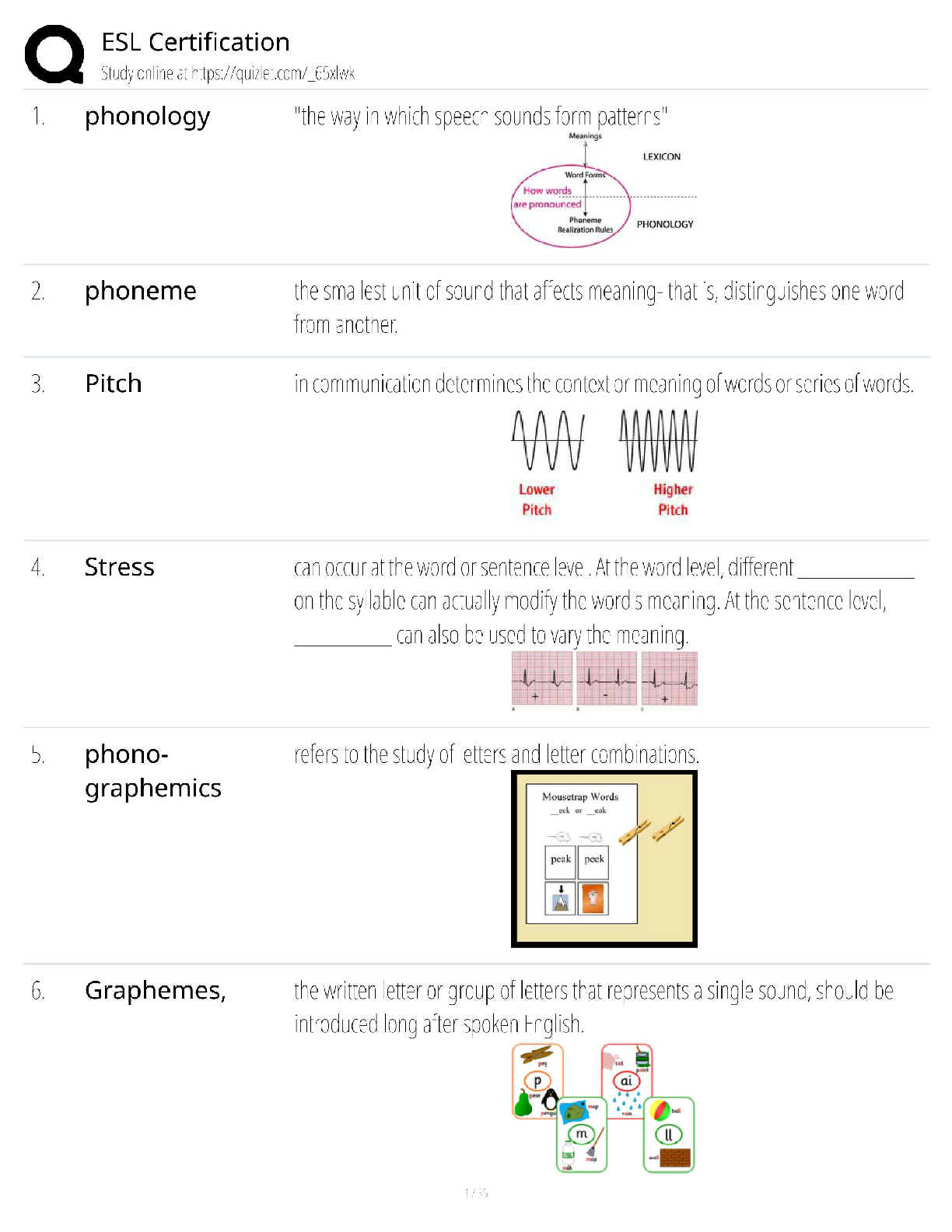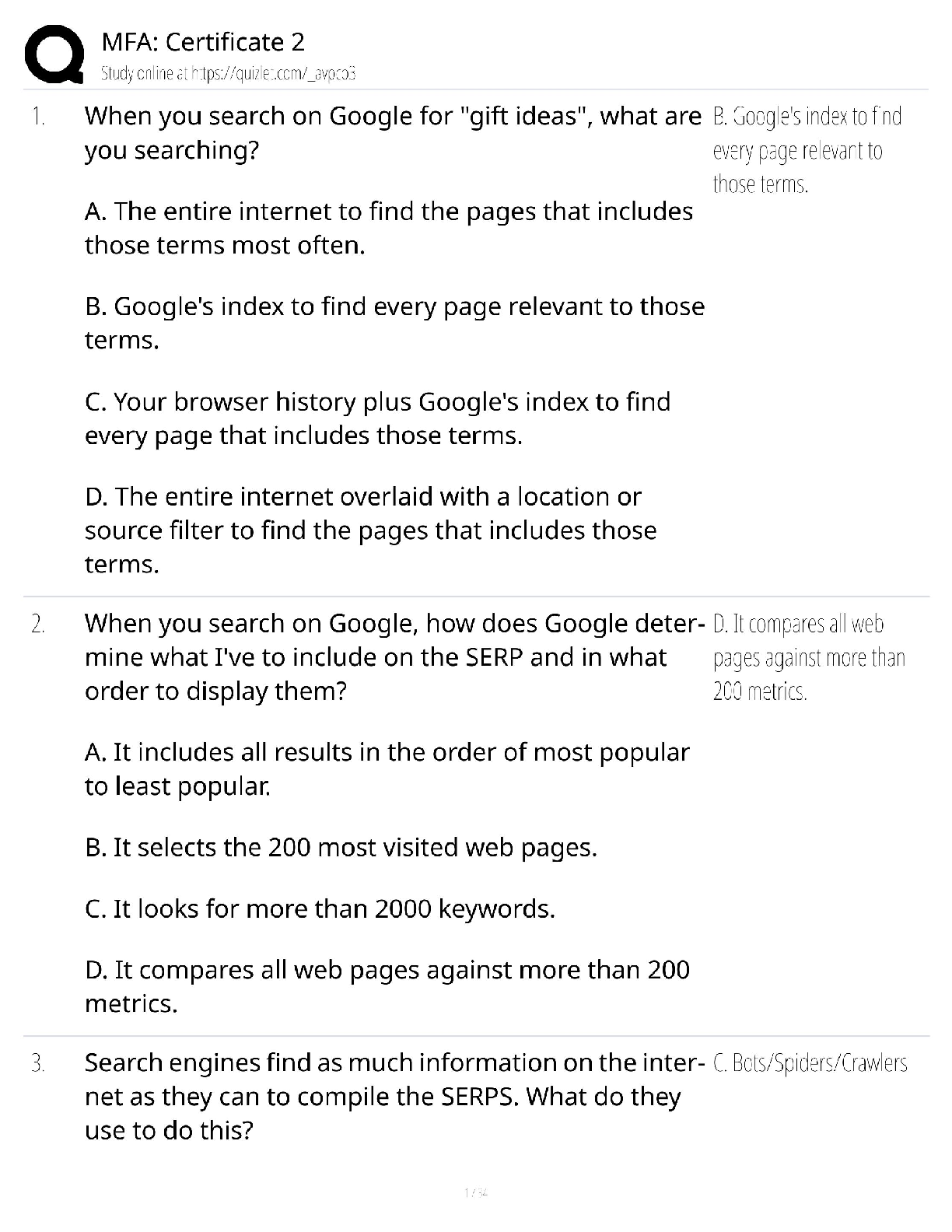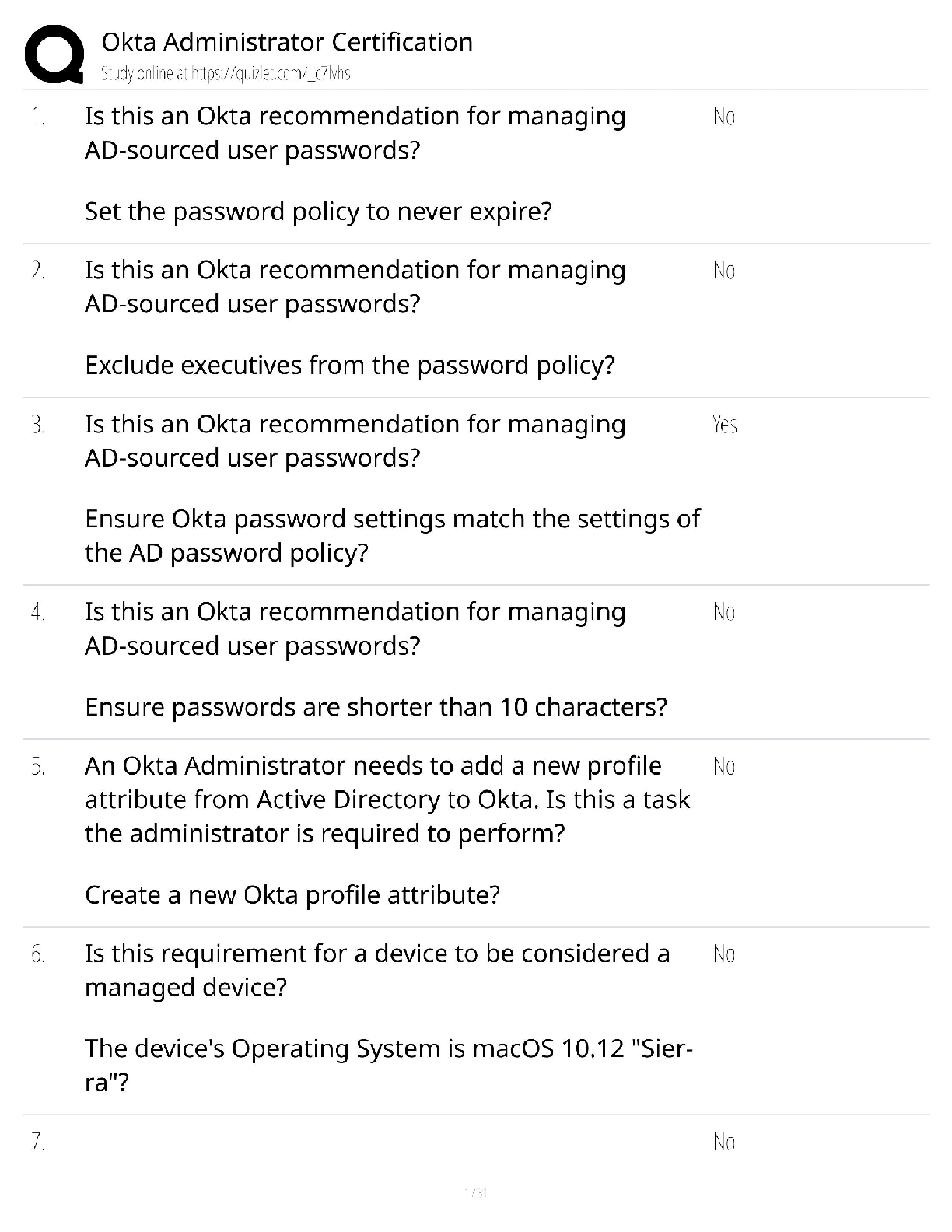*NURSING > QUESTIONS & ANSWERS > HESI OB MATERNITY VERSION 1 (A Grade), Latest Questions and Answers with Explanations, All Correct S (All)
HESI OB MATERNITY VERSION 1 (A Grade), Latest Questions and Answers with Explanations, All Correct Study Guide, Download to Score A
Document Content and Description Below
HESI OB MATERNITY VERSION 1 (A Grade), Latest Questions and Answers with Explanations, All Correct Study Guide, Download to Score A 1. A breastfeeding woman, 11⁄2 months postdelivery, calls the nur ... se in the obstetrician’s office and states, “I am very embarrassed but I need help. Last night I had an orgasm when my husband and I were making love. You should have seen the milk. We were both soaking wet. What is wrong with me?” The nurse should base the response to the client on which of the following? 1. The woman is exhibiting signs of pathological galactorrhea. 2. The same hormone stimulates orgasms and the milk ejection reflex. 3. The woman should have a serum galactosemia assessment done. 4. The baby is stimulating the woman to produce too much milk. 2. A client who is 3 days postpartum asks the nurse, “When may my husband and I begin having sexual relations again?” The nurse should encourage the couple to wait until after which of the following has occurred? 1. The client has had her six-week postpartum check-up. 2. The episiotomy has healed and the lochia has stopped. 3. The lochia has turned to pink and the vagina is no longer tender. 4. The client has had her first postpartum menstrual period. 3. A breastfeeding client, 7 weeks postpartum, complains to an obstetrician’s triage nurse that when she and her husband had intercourse for the first time after the delivery, “I couldn’t stand it. It was so painful. The doctor must have done something terrible to my vagina.” Which of the following responses by the nurse is appropriate? 1. “After a delivery the vagina is always very tender. It should feel better the next time you have intercourse.” 2. “Does your baby have thrush? If so, I bet you have a yeast infection in your vagina.” 3. “Women who breastfeed often have vaginal dryness. A vaginal lubricant may remedy your discomfort.” 4. “Sometimes the stitches of episiotomies heal too tight. Why don’t you come in for an assessment?” 4. The nurse monitors his or her postpartum clients carefully because which of the following physiological changes occurs during the early postpartum period? 1. Decreased urinary output. 2. Increased blood pressure. 3. Decreased blood volume. 4. Increased estrogen level. 5. A woman, 24 hours postpartum, is complaining of profuse diaphoresis. She has no other complaints. Which of the following actions by the nurse is appropriate? 1. Take the woman’s temperature. 2. Advise the woman to decrease her fluid intake. 3. Reassure the woman that this is normal. 4. Inform the neonate’s pediatrician. 6. Which of the following laboratory values would the nurse expect to see in a normal postpartum woman? 1. Hematocrit 39%. 2. White blood cell count 16,000 cells/mm3. 3. Red blood cell count 5 million cells/mm3. 4. Hemoglobin 15 grams/dL. 7. Which of the following client statements indicates a need for additional teaching about selfcare during pregnancy? ■ 1. “I should use nonskid pads when I take a shower or bath.” ■ 2. “I should avoid using soap on my nipples to prevent drying.” ■ 3. “I should sit in a hot tub for 20 minutes to relax after working.” ■ 4. “I should avoid douching even if my vaginal secretions increase.” 8. The nurse is discussing the importance of doing Kegel exercises during the postpartum period. Which of the following should be included in the teaching plan? 1. She should repeatedly contract and relax her rectal and thigh muscles. 2. She should practice by stopping the urine flow midstream every time she voids. 3. She should get on her hands and knees whenever performing the exercises. 4. She should be taught that toned pubococcygeal muscles decrease blood loss. 9. The nurse is evaluating the involution of a woman who is 3 days postpartum. Which of the following findings would the nurse evaluate as normal? 1. Fundus 1 cm above the umbilicus, lochia rosa. 2. Fundus 2 cm above the umbilicus, lochia alba. 3. Fundus 2 cm below the umbilicus, lochia rubra. 4. Fundus 3 cm below the umbilicus, lochia serosa. 10. During a home visit, the nurse assesses a client 2 weeks after delivery. Which of the following signs/symptoms should the nurse expect to see? 1. Diaphoresis. 2. Lochia alba. 3. Cracked nipples. 4. Hypertension. 11. The day after delivery a woman, whose fundus is firm at 1 cm below the umbilicus and who has moderate lochia, tells the nurse that something must be wrong, “All I do is go to the bathroom.” Which of the following is an appropriate nursing response? 1. Catheterize the client per doctor’s orders. 2. Measure the client’s next voiding. 3. Inform the client that polyuria is normal. 4. Check the specific gravity of the next voiding. 12. A breastfeeding client, G10P6408, delivered 10 minutes ago. Which of the following assessments is most important for the nurse to perform at this time? 1. Pulse. 2. Fundus. 3. Bladder. 4. Breast. [Show More]
Last updated: 3 years ago
Preview 1 out of 36 pages
, Latest Questions and Answers with Explanations, All Correct Study Guide, Download to Score A.png)
Buy this document to get the full access instantly
Instant Download Access after purchase
Buy NowInstant download
We Accept:

Also available in bundle (1)
Click Below to Access Bundle(s)
, Latest Questions and Answers with Explanations, All Correct Study Guide, Download to Score A.png)
LATEST HESI, ATI, APEA and NCLEX EXAMS BUNDLE, QUESTIONS AND ANSWERS WITH RATIONALE, All Correct Study Guide, Download to Score A
LATEST HESI, ATI, APEA and NCLEX EXAMS BUNDLE, QUESTIONS AND ANSWERS WITH RATIONALE, All Correct Study Guide, Download to Score A
By TopScholar 4 years ago
$247
320
Reviews( 0 )
$15.00
Can't find what you want? Try our AI powered Search
Document information
Connected school, study & course
About the document
Uploaded On
May 05, 2021
Number of pages
36
Written in
All
Additional information
This document has been written for:
Uploaded
May 05, 2021
Downloads
0
Views
125












 Questions and Answers (latest Update), All Correct, Download to Score A.png)
